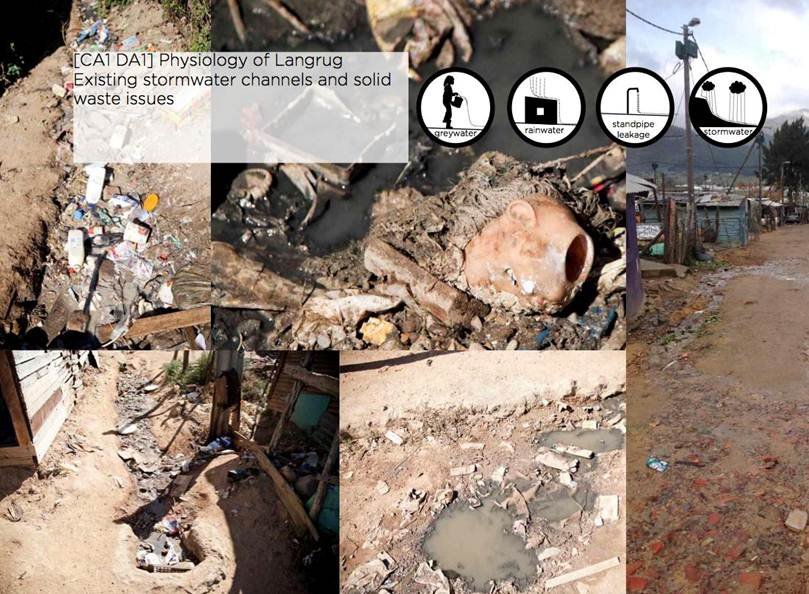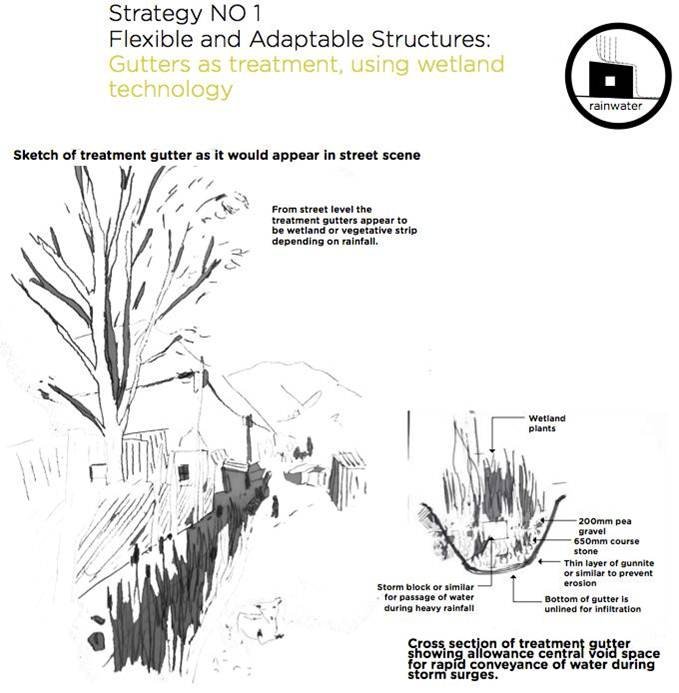Langrug settlement, along with industry, agriculture and formal settlements, accounts for toxins and waste entering the Berg River. Applying biomimicry to address wastewater, storm water and solid waste issues has developed innovative strategies.
Asking how can Langrug as a "body" maintain a healthy state and regulate it's own wastes, heal it's own water, creating balance by learning from the local ecosystem?
Discovering 25 of nature’s local inhabitants has provided existing strategies of the well-adapted locals to draw from. The common reed, with its ability to adapt its physiology to its surrounding conditions, informed how infrastructure in Langrug might be adaptive and coping well with disturbances. The ability of the Whitebottle Bush to function in the harsh Cape environments relies on a symbiotic relationship with mycorrhiza, giving the plant access to nutrients and water than wouldn’t otherwise be possible. This has informed how we think about the potential symbiotic relationships between Langrug and surrounding communities.
Out of this research, strategies have been developed to design treatment gutters, using John Todds eco-machines, which use a deep understanding of the ecology of wetlands to treat and filter wastewater. This system will not require behavior change in the way people currently dispose of their water, while almost instantly turning the drainage channels from a health risk into a thriving ecosystem capable of creating businesses related to cut flowers, a nursery and ornamental fish.
To achieve this it is critical to reimagine the solid waste system. We are applying a framework of redesign, renew and regenerate. This aims to create nutrient managers from Langrug capable to manage their own ‘waste’, as well as the ‘waste’ streams from Franschhoek, creating high end products such as mushrooms from coffee grinds, and caviar from cardboard. This seeks to create a symbiotic relationship between Franschhoek and Langrug creating a thriving ecosystem based on cooperative relationships.
biomimicrySA promotes the study and imitation of nature’s remarkably optimised designs, bringing together engineers, designers, naturalists and communities who can use those models to create sustainable technologies.


